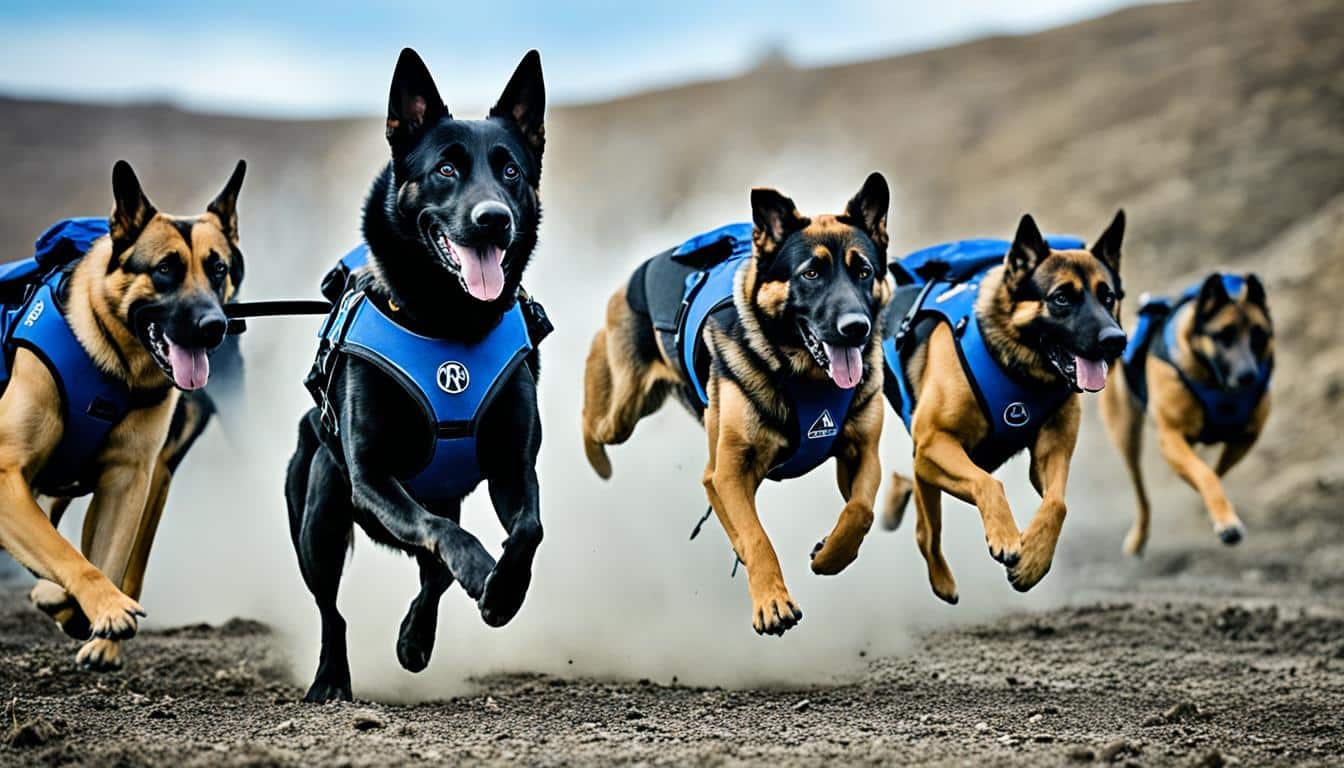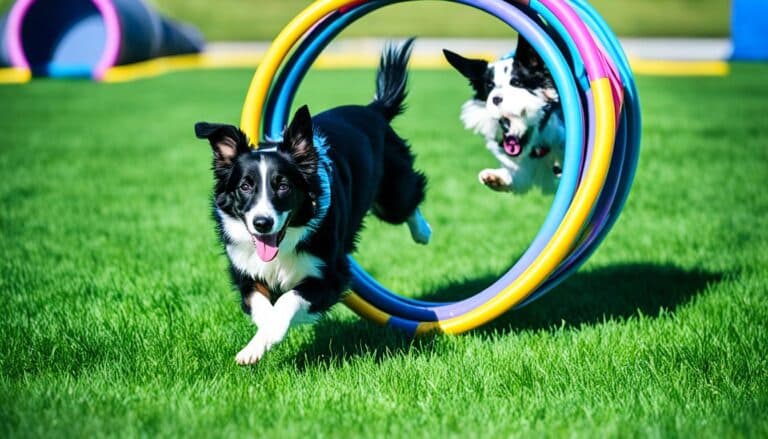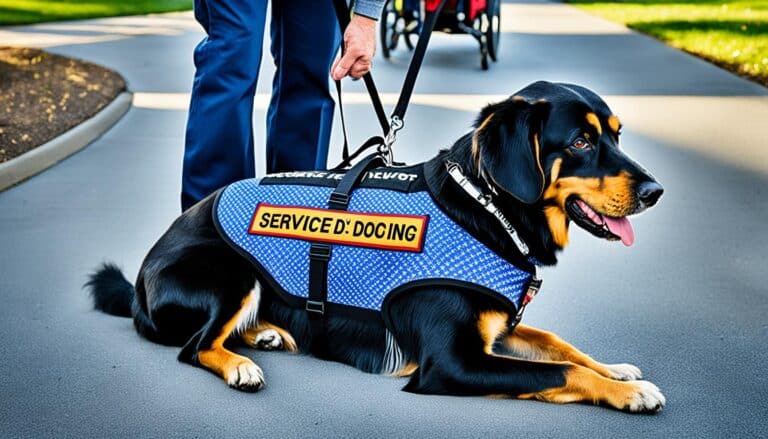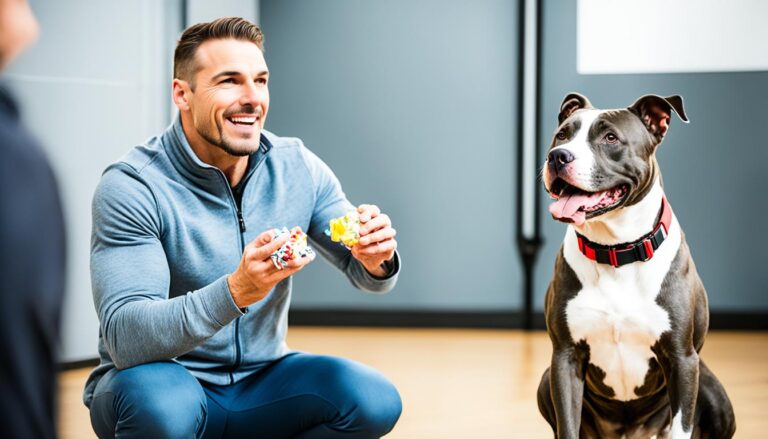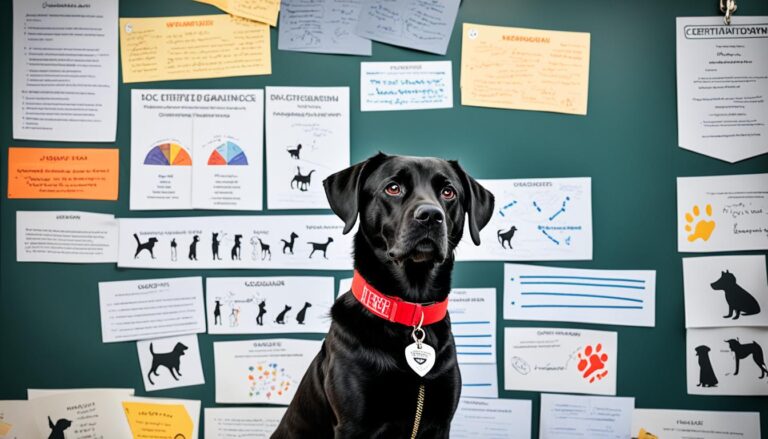How Are Military Dogs Trained
Imagine the intensity of being on the front lines, navigating treacherous terrain, and facing unknown dangers. Now, picture having an unwavering companion by your side, ready to risk it all for you. That’s the bond between a military working dog and their handler. It’s a partnership built on trust, loyalty, and a shared purpose.
When you see these courageous dogs in action, sniffing for explosives, tracking down threats, or providing invaluable support, have you ever wondered how they are trained? The journey from a boisterous puppy to a disciplined military working dog is an extraordinary one, filled with countless hours of dedication and skill development.
Let’s delve into the remarkable world of military dog training, where the dedication of trainers and the determination of these remarkable canines combine to form an unbreakable team. Together, they protect our troops, save lives, and leave an indelible mark on our hearts.
History of Military Dog Training
The use of dogs in the military has been a part of warfare for centuries, with a rich history that dates back to ancient civilizations. However, the concept of specific military working dog training programs gained prominence during World War I. Countries like Germany and the United Kingdom were among the first to implement their own training programs for military dogs. These programs recognized the invaluable contributions that dogs could make in various roles within military units.
Dogs proved to be versatile assets on the battlefield, serving as sentries, messengers, and even assisting in finding wounded soldiers. Their acute sensory abilities and unwavering loyalty made them ideal companions for soldiers in combat. Recognizing the potential of trained dogs, the U.S. military began their formal training efforts during World War II. In 1943, the U.S. established the War Dog Program, which aimed to train dogs for specific tasks and duties. Over the years, the program has evolved and expanded to include training dogs for other roles, such as law enforcement.
Today, military dog training programs focus on equipping dogs with the skills and abilities necessary to serve alongside their human counterparts. These programs emphasize discipline, obedience, and specialized training tailored to the unique needs of military operations. Military working dogs play an integral role in enhancing the effectiveness and safety of military personnel, and their training continues to evolve in line with changing operational requirements.
Training Programs for Military Dogs
The training programs for military dogs are designed to be comprehensive and cover all aspects of their required tasks. The Department of Defense’s K-9 personnel undergo specialized training courses to develop the skills necessary for their roles.
Basic Obedience Training
Basic obedience training is a fundamental part of the training program for military dogs. It focuses on teaching dogs essential commands such as sit, down, heel, and stay. This type of training establishes a strong foundation for communication and control between the handler and the dog. Basic obedience training ensures that the dog responds promptly and accurately to the handler’s commands in various situations and environments.
Advanced Specialized Training
In addition to basic obedience training, military dogs also undergo advanced specialized training based on their assigned roles. Depending on the specific task they will perform, dogs may receive training in areas such as explosives detection, narcotics detection, search and rescue, or tracking individuals. Advanced training programs equip military dogs with the skills and techniques necessary to excel in their designated roles.
Military Canine Training Techniques
Military canine training techniques use a combination of positive reinforcement and clear verbal and visual cues. Reinforcement methods such as praise, rewards, and play are employed to motivate and encourage dogs during their training. Clear and consistent communication is essential to ensure that the dogs understand their instructions and perform their tasks accurately.
During the training process, military dogs are exposed to a variety of scenarios and environments to simulate real-world situations. This exposure helps them become accustomed to different stimuli and prepares them to handle challenging situations they may encounter during their service.
Qualities and Selection of Military Working Dogs
Military working dogs play a vital role in various military operations, assisting their handlers in tasks such as explosive detection, patrol, and search and rescue. The selection process for these highly skilled animals is rigorous and focuses on identifying the qualities that make them suitable for military service.
One of the key factors considered during the selection of military working dogs is their breed. Breeds like German Shepherds, Belgian Malinois, and Pit Bulls are commonly chosen for their intelligence, bravery, and play drive, which are essential traits for performing the demanding tasks required in the field.
To ensure the suitability of candidates, military dogs undergo a comprehensive training assessment. This evaluation helps trainers determine the dog’s temperament, physical capabilities, and overall suitability for the job. Important physical factors taken into consideration include the condition of the hips, spine, and elbows, as these impact the dog’s ability to perform physically demanding tasks.
In addition to physical attributes, personality traits also play a significant role in the selection process. Military dogs need to possess qualities such as patience, endurance, and a strong desire to work. These dogs must be capable of concentrating on tasks for extended periods, maintaining focus in high-stress environments, and staying calm and obedient under pressure.
The military also has its own breeding program to ensure a consistent supply of suitable dogs. This allows for better control over the genetics and traits of the dogs, ensuring they meet the specific requirements of military service.
Training Techniques for Military Dogs
The training of military dogs relies heavily on positive reinforcement and effective communication between the handler and the dog. With a method called “clear signals training,” dogs are rewarded with verbal praise to indicate correct task performance. By implementing reward-based systems, trainers help dogs understand specific desired behaviors. Although treats may initially be used as rewards, their use is often limited as training progresses.
Training also involves generalizing commands to different environments, enabling dogs to perform tasks in various settings. This includes practicing commands with distractions to simulate real-world scenarios. Obedience courses are utilized to stimulate the dog’s cognitive abilities, further enhancing their training.
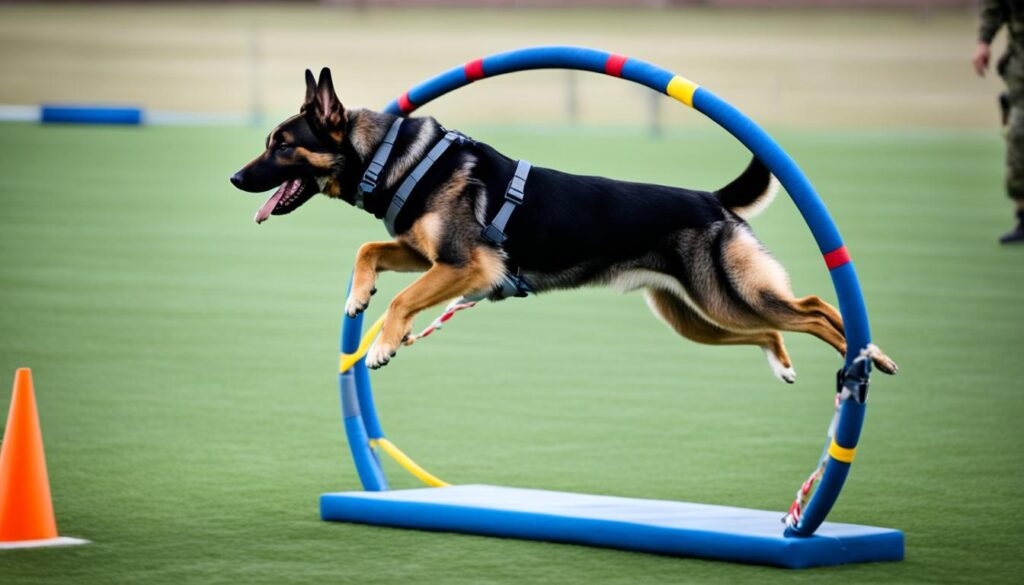
The Bond Between the Handler and the Dog
The bond between the handler and the military working dog is crucial for their success as a team. Handlers undergo intensive training to develop a positive relationship based on trust, respect, and camaraderie. They take on the role of provider and leader, ensuring that the dog’s needs are met and showing consistency in care.
During their training, handlers are often paired with experienced dogs who can guide them in understanding the intricacies of working with a military dog. This mentorship helps handlers navigate the unique dynamics of the handler-dog relationship.
The handler’s praise and affection serve as important rewards for the dog. Dogs instinctively seek to please their handlers, making them highly motivated during training sessions. The strong bond built between the handler and the dog fosters effective communication, trust, and reliance on each other.
Ultimately, this bond contributes to the success of military working dog teams in various operational environments. The unwavering connection between the handler and the dog enables them to work seamlessly together, ensuring the safety and security of military operations.
The Importance of Patience and Repetition in Training
When it comes to training military dogs, patience and repetition are key. Dogs have different learning paces, so as a trainer, it’s crucial to remain calm and composed throughout the training process. Consistency is also vital, as regular training sessions held at predictable times and locations help dogs get into the right mindset more easily.
To ensure effective training, handlers are advised to dedicate a minimum of 4 hours per week to train with their dogs, with daily practice sessions lasting at least 30 minutes. Repetition plays a vital role in helping dogs master commands and behaviors, reinforcing the training they receive.
During military working dog training, positive reinforcement techniques are used to reward and motivate the dogs. By providing rewards such as praise or treats when a dog performs a behavior correctly, it reinforces the desired response and encourages the dog to continue learning and performing well.
The Benefits of Patience and Repetition
The use of patience and repetition in training military dogs yields numerous benefits. For starters, dogs are more likely to understand and retain the training they receive when it is reinforced consistently. Repetition helps to reinforce muscle memory and allows dogs to perform tasks automatically, even in challenging or high-pressure situations.
Moreover, patience and repetition contribute to building a strong bond between the handler and the dog. As a trainer, your calm and patient approach fosters trust and confidence in the dog, enhancing their overall training experience and performance.
Creating a Structured Training Routine
Establishing a structured training routine is essential for military dog training success. It sets clear expectations, reinforces consistency, and helps dogs develop a routine that aligns with their training needs. A regular training schedule provides dogs with the necessary mental stimulation and physical exercise required to excel in their military roles.
By incorporating patience, repetition, and positive reinforcement techniques into your military dog training program, you can create a solid foundation for teaching obedience commands, specialized skills, and building a strong bond between handler and dog. This approach ensures that military working dogs are well-prepared to face the challenges they may encounter in their important missions.
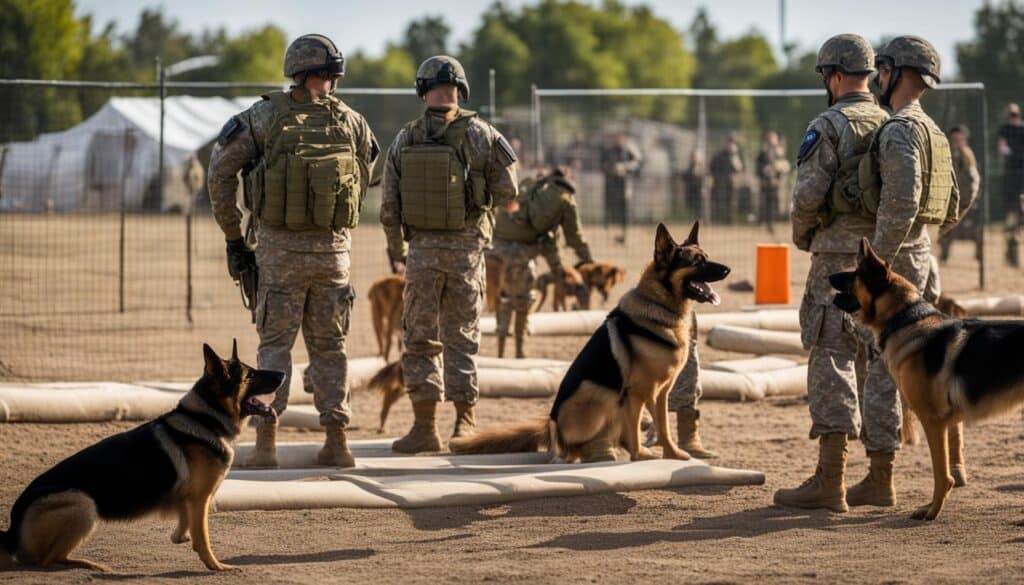
Socialization and Generalization in Military Dog Training
Socialization and generalization play crucial roles in the training process for military dogs. These training techniques help dogs develop the necessary skills and adaptability to work effectively in a variety of environments.
During socialization, military dogs are exposed to different people, animals, and surroundings. This exposure helps them build confidence and learn how to appropriately interact with others. By experiencing various scenarios, military dogs become more adaptable and comfortable in different situations, which is vital for their success in the field.
Generalization is another important aspect of military dog training. It involves teaching dogs to perform commands and tasks accurately and consistently, regardless of the environment. Dogs are trained to understand that a command or behavior should be executed correctly, regardless of the specific circumstances or setting. This ensures that military dogs can perform their duties reliably, whether they are in a familiar location or facing new challenges.
Both socialization and generalization help prepare military dogs for the unique demands they may encounter in their roles. By exposing dogs to a variety of situations and teaching them to generalize their training, military handlers can trust that their dogs will perform well in any given circumstance.
Benefits of Socialization and Generalization
The training techniques of socialization and generalization provide several key benefits for military dogs:
- Enhanced Adaptability: Socialization allows dogs to become comfortable and adaptable in various environments, ensuring they can effectively carry out their duties in any situation.
- Improved Confidence: Through exposure to different people, animals, and surroundings, dogs become more confident, aiding in their performance and decision-making abilities.
- Consistent Performance: Generalization training helps dogs understand that their commands and behaviors should be executed consistently, leading to reliable and predictable performance in any setting.
- Decreased Stress: Dogs that undergo thorough socialization and generalization training are less likely to become stressed or overwhelmed by unfamiliar situations, contributing to their overall well-being.
- Effective Field Performance: The combination of socialization and generalization training ensures that military dogs can confidently and reliably perform their tasks, even in challenging and dynamic settings.
By incorporating socialization and generalization into the training process, military working dogs are equipped with the skills and confidence necessary to excel in their roles, contributing to the success of their handlers and the overall mission.
The Role of Positive Reinforcement in Military Dog Training
Positive reinforcement is a fundamental technique used in military dog training to shape desired behaviors and forge a strong bond between handlers and their canine companions. Through this training method, dogs are rewarded and praised immediately after performing a behavior correctly, reinforcing the desired response.
Handlers utilize various forms of communication, such as verbal cues and hand signals, to guide and convey the correct actions to the dogs. Physical rewards like toys or treats are given to convey that the dog has done something right. It’s crucial to time the rewards appropriately to ensure that the dogs associate the rewards with the correct behavior.
Positive reinforcement-based training serves as a powerful motivator for military working dogs. It cultivates their motivation, desire to please their handlers, and instills a sense of happiness when executing tasks. By creating a positive and rewarding training environment, dogs become eager to learn, excel in their training, and exhibit consistent and reliable behaviors in their roles as military working dogs.
